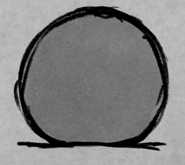Peep
Positive end-expiratory pressure (PEEP) is the pressure in the lungs (alveolar pressure) above atmospheric pressure (the pressure outside of the body) that exists at the end of expiration.[1] The two types of PEEP are extrinsic PEEP (PEEP applied by a ventilator) and intrinsic PEEP (PEEP caused by an incomplete exhalation). Pressure that is applied or increased during an inspiration is termed pressure support.
Peep2 noun countable 1. Download any streaming video for mac. A quick or secret look at something peep at/into Jon took a peep at his watch. A short high sound, like the sound a mouse or a young bird makes the peep of a chick loud peeps from the smoke alarm 4 (also peeps) informal a word meaning ‘people’, used in magazines Examples from. Even though he died at a young age, these Lil Peep quotes share his words of wisdom about life, love, and following your passions. Gustav Elijah Ahr, otherwise known as Lil Peep, was a hip-hop artist who was inspired by music artists like David Bowie and Fall Out Boy.

Intrinsic PEEP (auto)[edit]
Auto (intrinsic) PEEP – Incomplete expiration prior to the initiation of the next breath causes progressive air trapping (hyperinflation). This accumulation of air increases alveolar pressure at the end of expiration, which is referred to as auto-PEEP.
Auto-PEEP develops commonly in high minute ventilation (hyperventilation), expiratory flow limitation (obstructed airway) and expiratory resistance (narrow airway).
Once auto-PEEP is identified, steps should be taken to stop or reduce the pressure build-up.[2] When auto-PEEP persists despite management of its underlying cause, applied PEEP may be helpful if the patient has an expiratory flow limitation (obstruction).[3][4]
Extrinsic PEEP (applied)[edit]

Applied (extrinsic) PEEP is usually one of the first ventilator settings chosen when mechanical ventilation is initiated. It is set directly on the ventilator.

A small amount of applied PEEP (4 to 5 cmH2O) is used in most mechanically ventilated patients to mitigate end-expiratory alveolar collapse.[5] A higher level of applied PEEP (>5 cmH2O) is sometimes used to improve hypoxemia or reduce ventilator-associated lung injury in patients with acute lung injury, acute respiratory distress syndrome, or other types of hypoxemic respiratory failure.[6]
Complications and effects[edit]
Positive end-expiratory pressure can contribute to:
- Decrease in
- systemic venous return, cardiac output, cardiac index
- pulmonary capillary wedge pressure (PCWP), preload, arterial blood pressure
- Increase in:
- Intrathoracic pressure, RV afterload (CVP and PAP)
- lung functional residual capacity
- Pulmonary barotrauma can be caused. Pulmonary barotrauma is lung injury that results from the hyperinflation of alveoli past the rupture point.
- The effects of PEEP on intracranial pressure (ICP) have been studied. Although PEEP is hypothesized to increase ICP due to impedance of cerebral blood flow, it has been shown that high PEEP does not increase ICP.[7][8]
- Renal functions and electrolyte imbalances, due to decreased venous return metabolism of certain drugs are altered and acid-base balance is impeded.[9]
History[edit]
Peep Levels On Ventilator

John Scott Inkster, an English anaesthetist and physician, is credited with discovering PEEP.[10]When his discovery was published in the proceedings of the World Congress of Anaesthesia in 1968, Inkster called it Residual Positive Pressure.
See also[edit]
- Continuous positive airway pressure – Form of ventilator which applies mild air pressure continuously to keep airways open (CPAP)
- Positive airway pressure – Mechanical ventilation in which airway pressure is always above atmospheric pressure
References[edit]
- ^'Positive end-expiratory pressure (PEEP)'. TheFreeDictionary.com. Citing: Saunders Comprehensive Veterinary Dictionary. 2007.
- ^Caramez, MP; Borges, JB; Tucci, MR; Okamoto, VN; et al. (2005). 'Paradoxical responses to positive end-expiratory pressure in patients with airway obstruction during controlled ventilation'. Crit Care Med. 33 (7): 1519–28. doi:10.1097/01.CCM.0000168044.98844.30. PMC2287196. PMID16003057.
- ^Smith, TC; Marini, JJ (1988). 'Impact of PEEP on lung mechanics and work of breathing in severe airflow obstruction'. J Appl Physiol. 65 (4): 1488–99. doi:10.1152/jappl.1988.65.4.1488. PMID3053583.
- ^Kondili, E; Alexopoulou, C; Prinianakis, G; Xirouchaki, N; et al. (2004). 'Pattern of lung emptying and expiratory resistance in mechanically ventilated patients with chronic obstructive pulmonary disease'. Intensive Care Med. 30 (7): 1311–8. doi:10.1007/s00134-004-2255-z. PMID15054570.
- ^Manzano, F; Fernández-Mondéjar, E; Colmenero, M; Poyatos, ME; et al. (2008). 'Positive-end expiratory pressure reduces incidence of ventilator-associated pneumonia in nonhypoxemic patients'. Crit Care Med. 36 (8): 2225–31. doi:10.1097/CCM.0b013e31817b8a92. PMID18664777.
- ^Smith, RA (1988). 'Physiologic PEEP'. Respir Care. 33: 620.
- ^Frost, EA (1977). 'Effects of positive end-expiratory pressure on intracranial pressure and compliance in brain-injured patients'. J Neurosurg. 47 (2): 195–200. doi:10.3171/jns.1977.47.2.0195. PMID327031.
- ^Caricato, A; Conti, G; Della Corte, F; Mancino, A; et al. (March 2005). 'Effects of PEEP on the intracranial system of patients with head injury and subarachnoid hemorrhage: The role of respiratory system compliance'. The Journal of Trauma and Acute Care Surgery. 58 (3): 571–6. CiteSeerX10.1.1.500.2886. doi:10.1097/01.ta.0000152806.19198.db. PMID15761353.
- ^Oliven, A; Taitelman, U; Zveibil, F; Bursztein, S (March 1980). 'Effect of positive end-expiratory pressure on intrapulmonary shunt at different levels of fractional inspired oxygen'. Thorax. 35 (3): 181–5. doi:10.1136/thx.35.3.181. PMC471250. PMID6770485.
- ^Craft, Alan (December 13, 2011). 'John Scott Inkster'. BMJ (obituary). 343: D7517. doi:10.1136/bmj.d7517.

- Deliver and maintain services, like tracking outages and protecting against spam, fraud, and abuse
- Measure audience engagement and site statistics to understand how our services are used
- Improve the quality of our services and develop new ones
- Deliver and measure the effectiveness of ads
- Show personalized content, depending on your settings
- Show personalized or generic ads, depending on your settings, on Google and across the web
Peeps Pepsi
Click “Customize” to review options, including controls to reject the use of cookies for personalization and information about browser-level controls to reject some or all cookies for other uses. You can also visit g.co/privacytools anytime.
